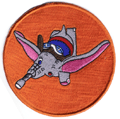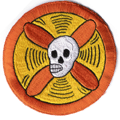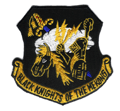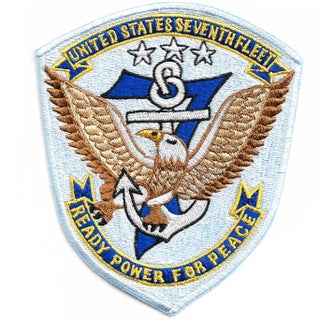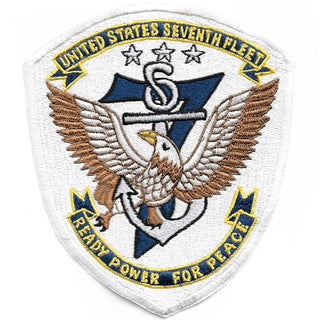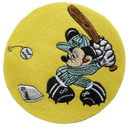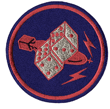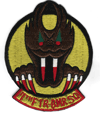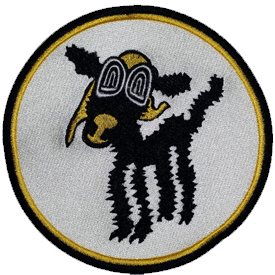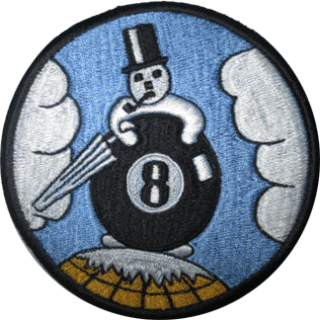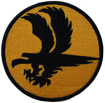- Home
- 1st-5th
- 6th-10th
- 11th-20th
- 21st-30th
- 31st-40th
- 41st-50th
- 51st-60th
- 61st-70th
- 71st-80th
- 81st-90th
- 91st-100th
- 101st-299th
- 300th-309th
- 310th-319th
- 320th-329th
- 330th-339th
- 340th-349th
- 350th-359th
- 360th-369th
- 370th-379th
- 380th-389th
- 390th-399th
- 400th-449th
- 450th-499th
- 500th-549th
- 550th-599th
- 600-699th
- 700th-4242nd
- 4243rd-7272nd
-
Ancient Times
- Mesopotamia 6000 BC - 1100 BC
- Indus Valley Civilization 3300 BC - 1300 BC
- Old Kingdom Egypt, 3000 BC - 2000 BC
- Middle Kingdom Egypt, 2000 BC - 1300 BC
- Vedic Period India - 1750 - 500 BC
- New Kingdom Egypt 1300 BC - 700 BC
- Shang Dynasty China 1800 BC - 1200 BC
- Zhou Dynasty China, 1200 BCE–500 BCE
- Ancient Greece, 1000 BCE–323 BCE
- Ancient Rome 753 BC - 476 AD
- Dark Age/Late Antiquity Europe, 4th century - 900
- A-C Patches
- D-M Patches
- N-T Patches
- USS Patches
- VA, VAH,, VAW, VB, VBF, VC Patches
- VF, VFA, VFP Patches
- VMA, VMB, VMCJ, VMD, VMF, VMFA, VMFP, VMP, VP, VPB, VS, VT, VU, VX Patches
- W, X, Y, Z Patches
- Movie/TV Patches
- UFO Patches
- Special Conspiracy/Secret/Belief/Cover-Up Patches
- Space Missions
- Specialty Operations/Bombings
- Unknown
- Consignment
- Special Order Patch/ID's
- Shipping Euro or Express
- Military Stories
- Under Construction
- Contact us
6th Bomb Group 4.5" Patch
ollowing its formation, the 6th Bomb Group was initially stationed at Luke Field, Hawaii. During this time, the group primarily operated DeHavilland DH-4 aircraft. In 1927, the group was relocated to France Field in the Panama Canal Zone. Throughout the interwar period, the 6th Bomb Group played a crucial role in the development of airpower tactics and strategies.
World War II When World War II erupted, the 6th Bomb Group was deployed to the Pacific theater. The group participated in numerous combat missions, including strategic bombing campaigns against Japanese-held territories. One of its most notable operations was the Doolittle Raid in April 1942, which saw B-25 bombers launched from an aircraft carrier to strike targets in Japan.
Basic shipping included to most countries, allow 4+ weeks before arrival. Additional costs may incur for EURO, South America and African countries.
6th Recon Squadron 5.5" Patch
The 6th Reconnaissance Squadron was initially established on April 1, 1942, as the 6th Photographic Reconnaissance Squadron. It was activated at Colorado Springs, Colorado, and assigned to the 3rd Photographic Group. The squadron’s primary mission was to conduct photographic reconnaissance and mapping operations.
During World War II, the squadron operated in various theaters of war, including the European, Mediterranean, and African theaters. It conducted vital reconnaissance missions, providing crucial intelligence to support military operations.
Basic shipping included to most countries, allow 4+ weeks before arrival. Additional costs may incur for EURO, South America and African countries
6th Night Fighter Squadron 4.75" Patch
The 6th Night Fighter Squadron is an inactive United States Air Force unit. Its last assignment was with Seventh Air Force, being inactivated at Wheeler Field, Hawaii on February 20, 1947. Thanks to the Wikipedia for the information. Basic shipping included to most countries, allow 4+ weeks before arrival. Additional costs may incur for EURO, South America and African countries.
6th Organization Maintenance Squadron 6th OMS 4" Patch
The Squadron was redesignated as the 6th Organizational Maintenance Squadron, on 01 Apr 1959. The squadron stood down at Walker AFB on 25 Mar 1967. The Squadron was never active while the Wing was stationed in Alaska, but was redesignated as the 6th Aircraft Generation Squadron, and later as the 6th Aircraft Maintenance Squadron, and Activated at MacDill AFB, FL. Thanks to usmilitariaforum for the above information. Basic shipping included to most countries, allow 4+ weeks before arrival. Additional costs may incur for EURO, South America and African countries.
7th Bomber Wing Black Knights of the Mekong 4" Patch
The first Strategic Air Command Arc Light B 52 combat mission took place on 18 June 1965 with twenty seven B 52F aircraft from 7 and 320 Bombardment Wings based at Andersen AFB Guam using 750 and 1000 pound bombs to attack a Viet Cong stronghold and targets in South Vietnam. Thanks to airforcecollectables website for the above information. Basic shipping included to most countries, allow 4+ weeks before arrival. Additional costs may incur for EURO, South America and African countries
7th Fleet United States - Seventh Fleet 5.5" Patch Light Blue Background
After the end of World War II, the 7th Fleet continued to play a vital role in the Pacific, serving as a deterrent against Soviet aggression during the Cold War. In the 1950s and 1960s, the fleet was involved in several conflicts, including the Korean War and the Vietnam War.
In the 1970s and 1980s, the 7th Fleet continued to evolve and modernize, with the addition of new ships and technologies, such as nuclear-powered aircraft carriers and submarines. During this period, the fleet also played a key role in the Gulf of Tonkin incident, which led to the United States’ involvement in the Vietnam War.
Basic shipping included to most countries, allow 4+ weeks before arrival. Additional costs may incur for EURO, South America and African countries.
7th Fleet United States - Seventh Fleet 5.5" Patch
Basic shipping included to most countries, allow 4+ weeks before arrival. Additional costs may incur for EURO, South America and African countries. South America and African countries. Thanks for Wikipedia for the following: The Seventh Fleet was formed on 15 March 1943 in Brisbane, Australia, during World War II, under the command of Admiral Arthur S. "Chips" Carpender. It served in the South West Pacific Area (SWPA) under General Douglas MacArthur. The Seventh Fleet commander also served as commander of Allied naval forces in the SWPA.
Most of the ships of the Royal Australian Navy were also part of the fleet from 1943 to 1945 as part of Task Force 74 (formerly the Anzac Squadron). The Seventh Fleet—under Admiral Thomas C. Kinkaid—formed a large part of the Allied forces at the Battle of Leyte Gulf, the largest naval battle in history, in October 1944. The Seventh Fleet fought in two of the Battle of Leyte Gulf's main actions, the Battle of Surigao Strait and the Battle off Samar.
7th Service Command 5.75" Patch
As a service command, the 7th Service Command was tasked with a wide range of responsibilities crucial to sustaining military operations. These included personnel administration, medical services, supply distribution, transportation coordination, and infrastructure maintenance. The command played a pivotal role in ensuring that troops were adequately equipped and supported for their missions.
Basic shipping included to most countries, allow 4+ weeks before arrival. Additional costs may incur for EURO, South America and African countries.
7th AAF Special Services 5" Felt Patch
The 7th AAF Special Services bold was a unique and interesting unit of the US Army Air Forces during World War II. The 7th Air Force was activated on July 15, 1942, at Hamilton Field, California, and it consisted of three wings: the 7th Bombardment Wing, the 7th Fighter Wing, and the 7th Reconnaissance Wing. The 7th Air Force was assigned to the South Pacific Area Command and saw action in the Pacific Theater during World War II.
Basic shipping included to most countries, allow 4+ weeks before arrival. Additional costs may incur for EURO, South America and African countries.
7 - 11 Dive Bomb Squadron 5" Patch
The squadron’s name, “7-11,” was chosen to reflect the unit’s mission of attacking enemy ships at dawn or dusk, which were considered the most advantageous times for dive bombing. The squadron’s insignia featured a stylized “7-11” in a circle, with a dive bomb symbol in the center.
The 7-11 Dive Bomb Squadron saw action in several major battles during the war, including the Battle of Tarawa, the Battle of Kwajalein, and the Battle of Eniwetok. The squadron’s Avenger aircraft were heavily armed with torpedoes and bombs, and they were known for their accuracy and effectiveness in attacking enemy ships.
Basic shipping included to most countries, allow 4+ weeks before arrival. Additional costs may incur for EURO, South America and African countries.
7th Fighter Bomber Squadron 5.5" Patch
The 7th Fighter Squadron (7 FS) is part of the 49th Fighter Wing at Holloman Air Force Base, New Mexico. Thanks to the Wikipedia for the information. Basic shipping included to most countries, allow 4+ weeks before arrival. Additional costs may incur for EURO, South America and African countries.
7th Fleet United States - Seventh Fleet 5.5" Patch
Basic shipping included to most countries, allow 4+ weeks before arrival. Additional costs may incur for EURO, South America and African countries. South America and African countries. Thanks for Wikipedia for the following: The Seventh Fleet was formed on 15 March 1943 in Brisbane, Australia, during World War II, under the command of Admiral Arthur S. "Chips" Carpender. It served in the South West Pacific Area (SWPA) under General Douglas MacArthur. The Seventh Fleet commander also served as commander of Allied naval forces in the SWPA.
Most of the ships of the Royal Australian Navy were also part of the fleet from 1943 to 1945 as part of Task Force 74 (formerly the Anzac Squadron). The Seventh Fleet—under Admiral Thomas C. Kinkaid—formed a large part of the Allied forces at the Battle of Leyte Gulf, the largest naval battle in history, in October 1944. The Seventh Fleet fought in two of the Battle of Leyte Gulf's main actions, the Battle of Surigao Strait and the Battle off Samar.
7th Combat Carrier Squadron 3.5" Patch
Throughout its history, the 7th Combat Carrier Squadron has participated in several notable engagements and operations. These may include involvement in major conflicts, peacekeeping missions, humanitarian efforts, and joint exercises with allied forces. The squadron’s contributions have been instrumental in advancing military objectives and upholding national security interests.
Basic shipping included to most countries, allow 4+ weeks before arrival. Additional costs may incur for EURO, South America and African countries.
8th Fighter Squadron 4.5" Patch
In October 1918, the 8th Fighter Squadron deployed to France, where it joined the American Expeditionary Forces (AEF) and became part of the 1st Pursuit Group. The squadron saw combat during the Meuse-Argonne Offensive, flying escort missions for bombardment groups and strafing enemy positions. The squadron also engaged in dogfights with German fighter aircraft, shooting down several enemy planes.
Basic shipping included to most countries, allow 4+ weeks before arrival. Additional costs may incur for EURO, South America and African countries.
8th Fighter Squadron 5.25" Patch
In October 1918, the 8th Fighter Squadron deployed to France, where it joined the American Expeditionary Forces (AEF) and became part of the 1st Pursuit Group. The squadron saw combat during the Meuse-Argonne Offensive, flying escort missions for bombardment groups and strafing enemy positions. The squadron also engaged in dogfights with German fighter aircraft, shooting down several enemy planes.
Basic shipping included to most countries, allow 4+ weeks before arrival. Additional costs may incur for EURO, South America and African countries.
8th Tactical Fighter Squadron The Black Sheep 5.5" Patch
Basic shipping included to most countries. Additional costs may incur for EURO, South America and African countries.
8th Weather Station 4" Patch
The first American weather personnel arrived at “Gander Field" on 09 March 1941 to support the 21st Reconnaissance Squadron, then on anti-submarine patrol. They were members of a larger unit which was designated “8th Air Corps Squadron, Weather” on 18 Nov 41. It then became “8th AAF Squadron, Weather” in March '42, and finally “8th Weather Squadron” on 05 Oct '42. Credits to Robert G. Pelley for the above information. Basic shipping included to most countries, allow 4+ weeks before arrival. Additional costs may incur for EURO, South America and African countries.
9th Tactical Recon 4.75" Patch
The 9th Tactical Reconnaissance Squadron is an inactive United States Air Force organization. Its last assignment was with the 363d Tactical Reconnaissance Wing, being stationed at Shaw Air Force Base, South Carolina. It was inactivated on 1 September 1969. Thanks to Wikipedia for the information. Basic shipping included to most countries, allow 4+ weeks before arrival. Additional costs may incur for EURO, South America and African countries.
9th Fighter Squadron 3.75" Patch
The 9th Fighter Squadron (9 FS) was part of the 49th Fighter Wing at Holloman Air Force Base, New Mexico. It operated the F-117 Nighthawkaircraft conducting air superiority missions. The 9th was inactivated on 16 May 2008 following the reactivation of the 7th Fighter Squadron for the arrival of the F-22A Raptor. Thanks for the Wikipedia for the information. Basic shipping included to most countries, allow 4+ weeks before arrival. Additional costs may incur for EURO, South America and African countries.

